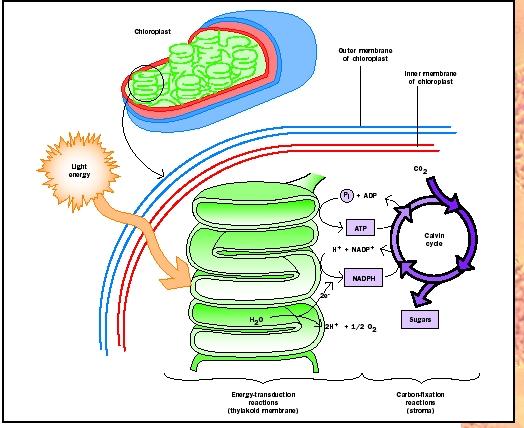Photosynthesis is the process of converting light energy into chemical energy suitable for the organism's needs. The process starts when light energy is captured by the proteins called chlorophyll. The two types of chlorophyll are chlorophyll a and chlorophyll b. Chlorophyll in plants is stored in organelles called chloroplasts and in bacteria it is stored in the cell membrane. Once the light energy excites the electrons, they are used to split a hydrogen ion from a water molecule. Then the hydrogen ions are used to create ion gradients to generate ATP and NADPH. Oxygen is released as a byproduct. These reactions are called the light-dependent reactions.
The two energy carrying molecules ATP and NADPH are then inserted into the Calvin Cycle, in plants, along with Carbon Dioxide to create a more long lasting molecule of energy storage, glucose. In bacteria the Krebs Cycle is utilized. Three steps occur: carbon fixation, reduction reactions, and RuBP regeneration. These processes are called light-independent reactions, even though they are carried out exclusively when light is present.

